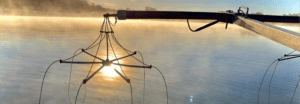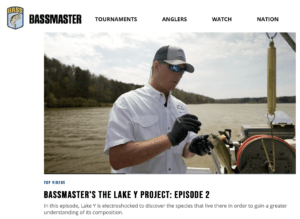Why Choose Lochow Ranch for Pond & Lake Management
Serving Texas, Oklahoma, Arkansas and Louisiana, Lochow Ranch Pond & Lake Management proudly puts more than two decades of experience to work for you. Our team includes biologists, technicians and other professionals with deep expertise in pond and lake management services.
Check us out if you are considering building a lake, looking for pond stocking services, to buy fish for a pond, or getting professional pond management and maintenance or fishery management. Our services include lake design, pond construction, pond renovation, pond water testing, electrofishing, pond stocking, control of pond weeds, and pond liming and fertilizing.
Let us help you build your dream pond that will delight your family and friends for generations to come.





















 “We try to use water clarity to our advantage,” John says. “The perfect
“We try to use water clarity to our advantage,” John says. “The perfect 
 John says he’d add a couple of plant species that are easy to fish, not too invasive, would thrive and be easy and inexpensive to treat, as well as being preferred by grass carp. He says using EPA-approved herbicides or algaecides around the
John says he’d add a couple of plant species that are easy to fish, not too invasive, would thrive and be easy and inexpensive to treat, as well as being preferred by grass carp. He says using EPA-approved herbicides or algaecides around the 
 “Really, this is a very average lake,” John said, “which is a great starting point. This is what people are dealing with all over America. You’re overpopulated with small stunted
“Really, this is a very average lake,” John said, “which is a great starting point. This is what people are dealing with all over America. You’re overpopulated with small stunted  While on the boat, Lee Schoech, one of our
While on the boat, Lee Schoech, one of our 

Recent Comments